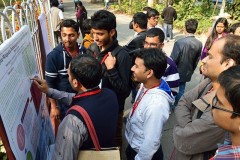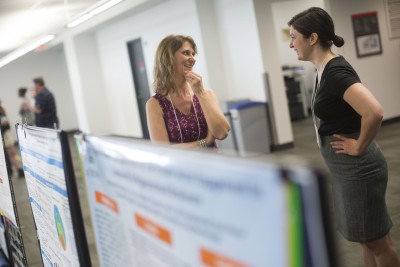by Lily Haines, KMb RA
It’s that time of year again! Conference season is just around the corner. You’re probably beginning to ask yourself: How do I prepare an effective and engaging poster presentation? How can I share what I learn with larger networks within and connected to the Community First: Impacts of Community Engagement (CFICE) project?
Read on for some tips and tricks to make the most of your conference experience.
Preparing your research poster or presentation:
- Know your audience! Will you be speaking to experts in your field? Or is your audience more general? If the latter is the case, be sure to use plain language, and keep it simple! Try to frame your question and results in an understandable way. (Check out CFICE’s video on writing in plain language here!)
- Bring your research to life with graphics! This is how you grab the attention of your audience members. Consider high resolution action photos, colour-coded analyses and graphs. Keep your graphs as user-friendly as possible; they should be understandable WITHOUT reference to the accompanying text.
- Less is more. Try to be brief with your writing and use point form. No one wants to see a poster filled with text. You can fill your audience in on the small details during your presentation.
- Conclusions first: Your conclusions highlight exactly what you discovered, and what makes your research unique. Essentially, your conclusions make headlines! Start with your conclusion section to draw in your viewers. Then, throughout the presentation, ensure each section (i.e. Introduction and Research Question, Methods, Results, Discussion) flows back to your conclusions.
- Your layout should be logical and creative! Use columns, boxes, arrows, bullet points and bubbles to ease your audience forward throughout your presentation.
- Choose your software wisely. Most researchers use Microsoft PowerPoint to design their poster presentations because it is quick and easy to use. However, Adobe InDesign and Adobe Illustrator have more layout, design and text options. If you are not under a time crunch, try learning a new software to make your research poster stand out from the rest!
- Rely on yourself, not just your poster. You are ¾ of the presentation and your poster is ¼. Show your excitement and enthusiasm for your research as you interact with your audience. Answer their questions, and ask them questions in return. Take advantage of this opportunity to gain useful insights and new ideas.
Promoting Your Conference Work through CFICE
 Make your research matter to the public. Check out these tips below to gain public interest on social media, and help inform your community!
Make your research matter to the public. Check out these tips below to gain public interest on social media, and help inform your community!
- If you are presenting CFICE-related content, shout out to us on Twitter (@CFICECan) and Facebook. We’ll share your work with our network. Who knows, you may even garner some more followers as a result!
- Live-Tweeting: Consider live-tweeting a speaker event at your conference! Don’t forget to #Hashtag #Hashtag #Hashtag and mention @CFICECan in all your tweets! We Tweet back.
- Create a podcast! Condense your presentation into a minute-long podcast. Post your podcast online, share it on social media, and share it with CFICE. This way, those that weren’t at the conference can still hear all about your exciting research. (Check out an example of CFICE’s plain language podcasts here!)
- Take Photos and Videos! The more visual content you can generate at your conference, the better. Photos and video serve as great promotional material on social media and for future projects down the road. Don’t forget to share them with CFICE!
Got other tips and tricks for promoting your work? Share them with us by commenting below, or connecting with CFICE on social media! Happy Conference Season!
